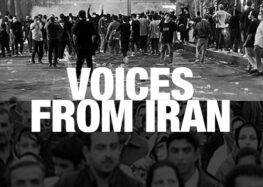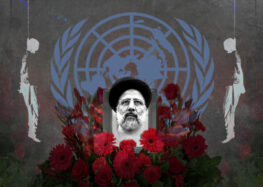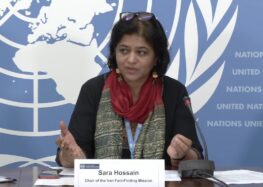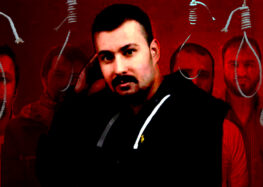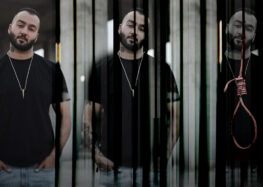22 Killed and Hundreds Arrested as Iran’s Supreme Leader Blames Protests on Foreign “Enemies”
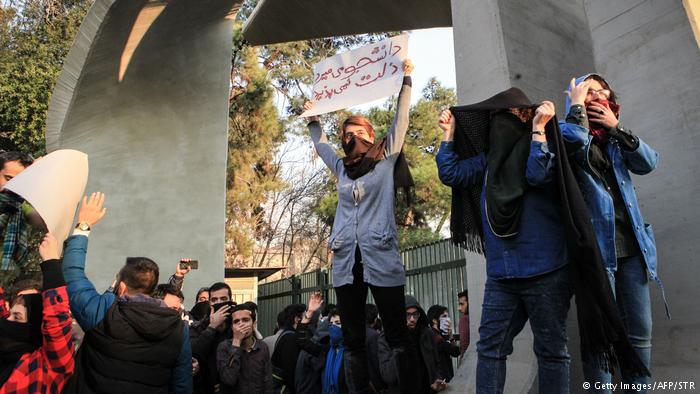
As details emerged about the number of casualties and arrests that occurred during the first six days of the anti-government demonstrations that began in Iran on December 28, 2017, Supreme Leader Ali Khamenei pointed a finger at foreign “enemies.”
“In the incidents during the past few days, the enemies of Iran have been using every tool in their possession, including money, weapons, politics and security services to create problems for the Islamic state,” said Khamenei on January 2, 2018.
According to several official sources, at least 22 people have been killed thus far. Officials have avoided blaming security forces for the deaths, however, anti-riot police and the Basij volunteer militia force have been instructed to quell the protests.
Deaths have been reported in several provinces: one in the city of Khomeini Shahr, Isfahan Province; six in Qahderijan, Isfahan Province; three in Shahin Shahr, Isfahan Province; six in Tuyserkan, Hamadan Province; two in Izeh, Khuzestan Province; and four in Doroud, Lorestan Province.
A member of the Islamic Revolutionary Guards Corps (IRGC) was also reportedly killed by a protestor with a hunting gun near the city of Najafabad, Isfahan Province, on January 1.
On December 30, four young protesters—two of whom later died—were injured during protests in Doroud, according to Habibollah Khojasteh, the deputy governor of Lorestan Province in charge of political and security affairs. He denied that police or security forces had shot the protestors.
A father and son also died in Doroud on December 30 after a fire truck, set on fire by demonstrators, crashed into the roof of their car after being pushed off a highway bridge, according to the state-run Islamic Republic of Iran Broadcasting (IRIB) service.
Official accounts have varied about the number of deaths in Tuyserkan. On January 1, IRIB reported six protesters had died but the deputy governor of Hamadan Province for political and security affairs, Saeid Shahrokhi, claimed only three deaths had occurred.
Official sources also reported that six protesters died after they allegedly tried to take over a police station in Qahderijan in Isfahan Province on January 1. No further details have been reported.
IRIB also aired a report about the death of 15-year-old Armin Sadeghi from a bullet wound in Khomeini Shahr on January 1.
In a tweet sent out the next day, Education Minister Mohammad Bathaei expressed sorrow for the deaths of Armin and another student, only identified as “Shayan,” and condemned the nationwide protests as “blind, violent riots.”
Reports on social media that two protesters had been killed in Sanandaj, Kurdistan Province, and another in Kermanshah, Kermanshah Province, remain unconfirmed.
Hundreds Arrested
Meanwhile, the number of arrests reported by official sources between December 28, 2017, and January 1, 2018, has exceeded 1,000. The actual number is likely much higher as many arrests have gone unreported.
According to the reports, there have been 450 arrests in Tehran, Tehran Province; 138 in Mashhad, Khorasan Razavi Province; 40 in Ardabil, Ardabil Province; more than 100 in Isfahan, Isfahan Province; 50 in Kashan, Isfahan Province; more than 100 in Arak, Central Province; and 20 in Karaj, Alborz Province.
The University Trade Unions’ Council of Iran (UTUCI) also announced the arrests of several student activists at Tehran University and at two other universities in the capital, Allameh Tabataba’i University and Sharif University.
The names confirmed so far by the Center for Human Rights in Iran (CHRI) include:
Tehran University: Leila Hassanzadeh, Sina Rabiei, Mohsen Haghshenas, Mikaeil Gholirad, Pedram Pazireh, Mohammad Mohammadian, Ali Mozaffari, Mehdi Vahabi-Sani, Sohein Movahedan, Arash Avari, Danial Iman, Amir-Hossein Elmtalab, Majid Akbari, Mohsen Torabi, Kasra Nouri, Aref Fathi, Mohsen Mir-Hosseini and Mohammad Javaheri.
Allameh Tabataba’i University: Sama Derakhshani, Faezeh Abdipour, Majid Mosafer, Mohammad Khani, Siavash Amjadi, Mohsen Shahsavan and Sina Ghaffari.
Sharif University of Technology: Mohammad Sharifi Moghaddam.
Officials Claim “Enemies” Are Fomenting the Protests
Iran’s Prosecutor General Mohammad Jafar Montazeri pointed at the American and Israeli intelligence agencies as the root cause of the protests and threatened to end them with force.
“The enemies are spending the dollars they received from Saudi Arabia in order to bring chaos to the country and get revenge for their past defeats,” said Montazeri on January 2.
“Those who commit crimes, destroy property and harm the people will undoubtedly be dealt with firmly by the judicial and security agencies,” he added.
Mousa Ghazanfarabadi, the head of the Tehran Revolutionary Court, warned of heavy punishments for detained protesters.
“With each additional day, the riots increase the crime and punishment of those who are arrested. They will no longer be considered protesters seeking their rights but individuals who want to harm the foundations of the state,” he said on January 2.
The senior judge also accused some of the detainees of leading the protests according to the orders of “foreign intelligence agencies” and said they could be sentenced to death for “fighting against God.”

